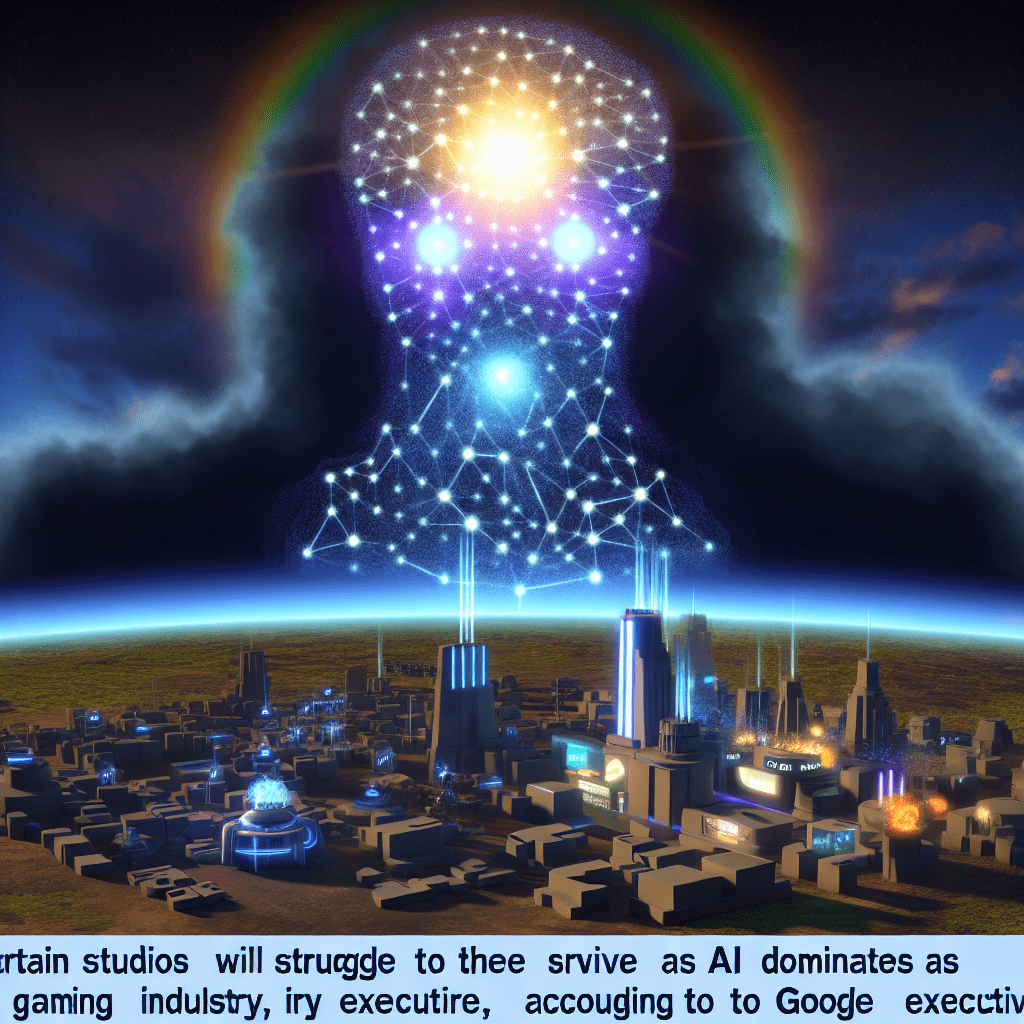
Summary
- Jack Buser from Google Cloud cautioned that increasing costs and stagnant playtime have left game studios with a damaged business model.
- A recent study by Google Cloud indicated that 90% of developers are now utilizing AI tools in some aspect of production.
- Despite concerns about job losses and backlash as AI transforms game design, Buser mentioned that AI has the potential to create “living games.”
Generative AI is prompting a significant recalibration in the gaming sector—some studios may not endure the transition.
This is the alert from Jack Buser, global games director at Google Cloud, who asserts that the industry is undergoing a transformation comparable to any it has faced.
“Some game companies will thrive, and some will not,” Buser stated to Decrypt. “And some will emerge from this revolution.”
Having spent 30 years in the industry, Buser collaborates with publishers and studios to embrace cloud technology and AI, from optimizing multiplayer environments to analyzing player data and exploring generative solutions. His role places him at the crossroads of large tech and video game development, as studios tap into Google’s servers and AI systems to enhance or maintain their offerings.
He emphasized that AI is arriving at a time when developers are experiencing increased financial strain and diminishing player interest in new releases.
“More than half of playtime is spent on games that are over six years old,” he noted. “So if you’re launching a new title, you’re vying for only a fraction of the available playtime. And if you’re responsible for one of those established games, you’re working hard to stay relevant and keep players engaged.”
After years of growth, the global gaming sector faced a downturn post-pandemic, with revenues declining in 2022 before rebounding. In 2024, it brought in $182.7 billion, marking a 3.2% increase from the previous year. Revenues are predicted to rise to $188.9 billion in 2025, reflecting a 3.4% growth.
“The business model is broken, leading to layoffs, game cancellations, and various other challenges within the industry in recent years,” Buser commented.
Nonetheless, Buser is optimistic about generative AI being a potential solution for the industry. A Harris Poll conducted by Google found that 90% of developers are already incorporating AI tools into some phases of production.
“By addressing each use case in your development pipeline with AI, from conception to quality assurance, you can significantly reduce development time,” he affirmed.
Developers are experimenting with generative tools that aim to transform the aesthetics, mechanics, and progression of games in real time. Buser referred to this as the age of the “living game”—games that utilize AI to continuously analyze player interactions and generate new content instantaneously. Unlike conventional games that rely on updates and downloadable content (DLC), these systems could adapt in mere minutes rather than months.
“Consider Darth Vader in Fortnite—the player response was enormous,” Buser remarked. “We are just at the beginning of this shift.”
However, the implementation was bumpy. When Fortnite introduced an AI-driven Darth Vader earlier this year, the character spouted offensive remarks before Epic Games quickly corrected the issue.
Not everyone was supportive of the experiment. After its launch, SAG-AFTRA submitted a labor complaint against Epic’s subsidiary Llama Productions, alleging that the firm replaced voice actors with AI without obtaining union approval.
“This issue relates to the union’s vital role in negotiating terms related to the replacement of bargaining unit work with AI technology,” a SAG-AFTRA representative informed Decrypt. “While we are fully on board with AI tools for enhancing audience experiences, employers cannot implement these types of changes without prior negotiation with the union.”
Buser compared the evolving role of AI to significant changes in gaming history—moments when technological advancements reshaped the industry landscape. Some businesses adjusted to the shift from cartridges to CD-ROMs, while others failed.
“You will observe some companies that will not survive this transition,” Buser noted. “Conversely, you’ll see other substantial game developers today that were what I’d define as CD-ROM-native. This dynamic is replicating itself once more.”
GG Newsletter
Stay updated with the latest web3 gaming news, engage with gaming studios and influencers in the sector, and receive power-ups from our partners.

